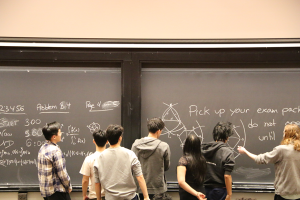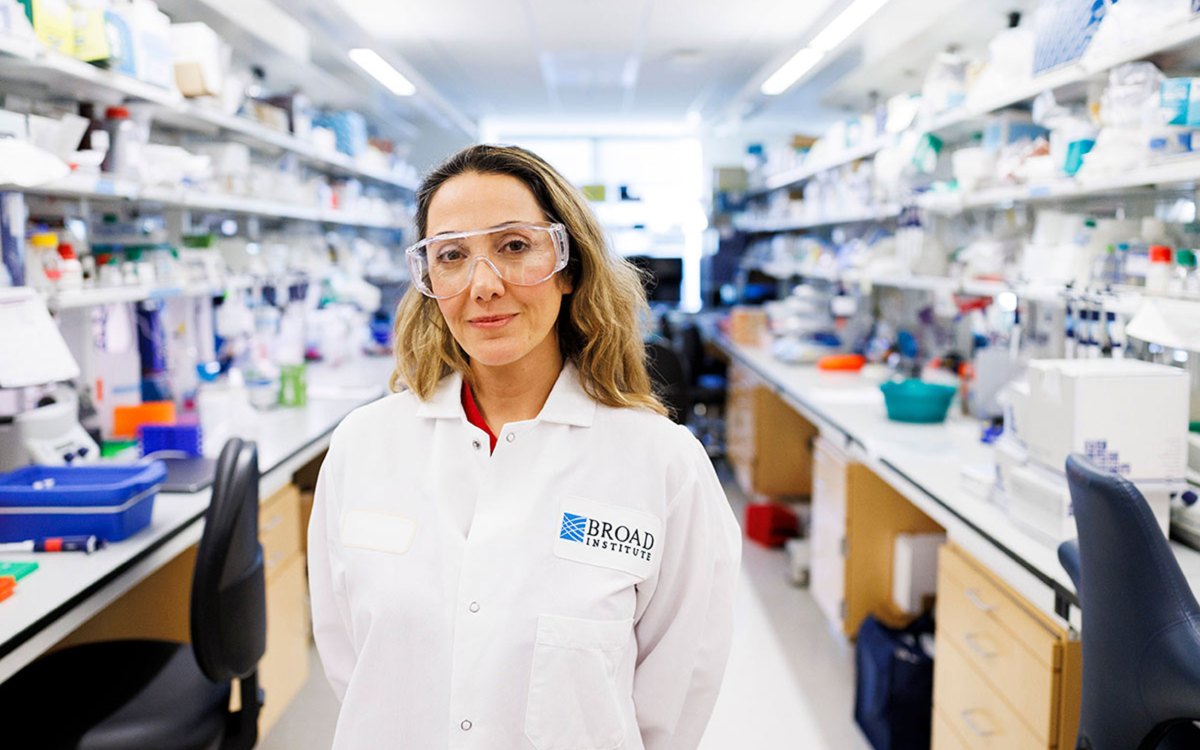Physicists Slow Speed of Light
Light, which normally travels the 240,000 miles from the Moon to Earth in less than two seconds, has been slowed to the speed of a minivan in rush-hour traffic — 38 miles an hour.
An entirely new state of matter, first observed four years ago, has made this possible. When atoms become packed super-closely together at super-low temperatures and super-high vacuum, they lose their identity as individual particles and act like a single super-
atom with characteristics similar to a laser.
Such an exotic medium can be engineered to slow a light beam 20 million-fold from 186,282 miles a second to a pokey 38 miles an hour.
“In this odd state of matter, light takes on a more human dimension; you can almost touch it,” says Lene Hau, a Harvard University physicist.
Hau led a team of scientists who did this experiment at the Rowland Institute for Science, a private, nonprofit research facility in Cambridge, Mass., endowed by Edwin Land, the inventor of instant photography.
In the future, slowing light could have a number of practical consequences, including the potential to send data, sound, and pictures in less space and with less power. Also, the results obtained by Hau’s experiment might be used to create new types of laser
projection systems and night vision cameras with power requirements a million times less than what is presently possible.
But that’s not why Hau, a research scientist at both Harvard and the Rowland Institute, originally set out to do the experiments. “We did them because we are curious about this new state of matter,” she says. “We wanted to understand it, to discover all the things that can be done with it.”
It took Hau and three colleagues several years to make a container of the new matter. Then followed a series of 27-hour-long trial runs to get all the parts and parameters working together.
“So many things have to go right,” Hau comments. “But the results finally exceeded our expectations. It’s fascinating to see a beam of light almost come to a standstill.”
Members of Hau’s team included Harvard graduate students Zachary Dutton and Cyrus Behroozi. Steve Harris from Stanford University served as a long-distance collaborator.
Making a Super-atomic Cloud
The idea of this new kind of matter was first proposed in 1924 by Albert Einstein and Satyendra Nath Bose, an Indian physicist. According to their theory, atoms crowded close enough in ultra-low temperatures would lock together to form what Hau calls “a single glob of solid matter which can produce waves that behave like radio waves.”
This so-called Bose-Einstein condensate was not actually made until 1995, because the right technological pot to cook it up in did not exist. Vacuums hundreds of trillions of times lower than the pressure of air at Earth’s surface, and temperatures almost a billion times colder that that in interstellar space, are needed to produce the condensate. Temperatures must be lowered to within a few billionths of a degree of absolute zero (minus 459.7 degrees F), where atoms have the least possible energy and all but cease to move around.
Hau and her group started with a beam of sodium atoms injected into a vacuum chamber and moving at speeds of more than a thousand miles an hour. These hot atoms have an orange glow, like sodium highway and street lights.
Laser beams moving at the normal speed of light collide with the atoms. As the atoms absorb particles of light (photons), they slow down. The laser light also orders their random movement so they move in only one direction.
When the atoms are slowed to a modest 100 miles an hour or so, the experimenters load the atoms into what they call “optical molasses,” a web of more laser beams. Each time an atom collides with a photon it is knocked back in the direction from which it came, further slowing it down, or cooling it.
The atoms are now densely packed in a cigar-shaped clump kept floating free of the walls of their container by powerful magnetic fields.
“It’s nifty to look into the chamber and see the clump of cold atoms floating there,” Hau remarks.
In the final stage, known as “evaporative cooling,” atoms still too hot or energetic are kicked out of the magnetic field.
The stage is now set for slowing light. One laser is shot across the width of the cloud of condensate. This controls the speed of a second pulsed laser beam shot along the length of the cloud. The first laser sets up a “quantum interference” such that the moving light beams of the second laser interfere with each other. When everything is set up just right, the light can be slowed by a factor of 20 million.
The process is described in detail in the Feb. 18 issue of the scientific journal Nature. (Warning: Don’t try this at home.)
Relativity and the Internet
Slowing light this way doesn’t violate any principle of physics. Einstein’s theory of relativity places an upper, but not lower, limit on the speed of light.
According to relativity theory, an astronaut traveling at close to the speed of light will not get old as fast as those she leaves behind on Earth. But driving at 38 miles an hour, as everyone knows, will not affect anyone’s rate of aging.
“However, slowing light can certainly help our understanding of the bizarre state of matter of a Bose-Einstein condensate,” Hau points out.
And a system that changes light speed by a factor of 20 million might be used to improve communication. It can be used to greatly reduce noise, which allows all types of information to be transmitted more efficiently. Also, optical switches controlled by low intensity light could cut power requirements a million-fold compared to switches now operating everything from telephone equipment to supercomputers.
But what about the cost and exotic equipment needed for such improvements? “Technologies that push past old limits are always expensive and impractical to begin with; then they become cheaper and more manageable,” Hau says matter-of-factly. She sees the possibility that slow light will lead to “significant advances in communications ten years from now, if we get to work on it right away.”
What will she do next?
Hau sweeps her hand over a roomful of equipment and explains how things are already being set up to slow light speed even more, to one centimeter (less than a half-inch) a second. That’s a leisurely 120 feet an hour.
Hau will give a lecture on her experiments at 4:30 p.m. on Monday, Feb. 22, at Room 250, Jefferson Laboratories.





